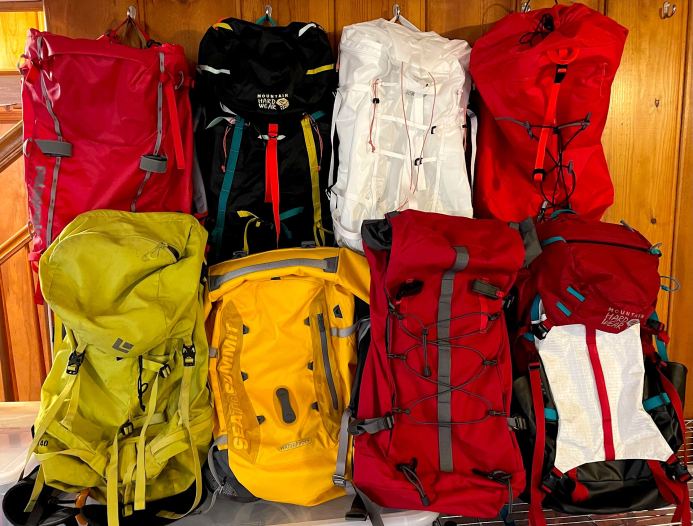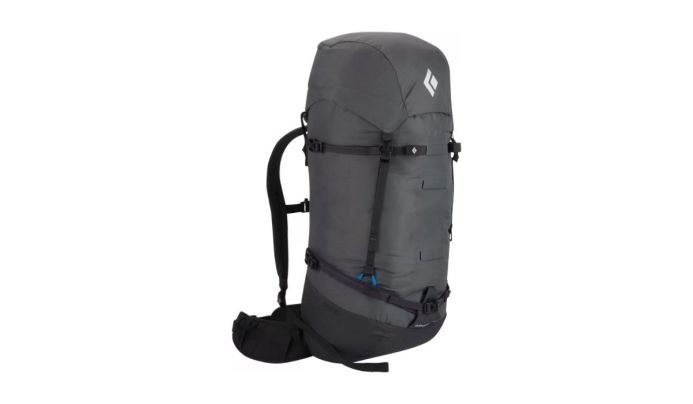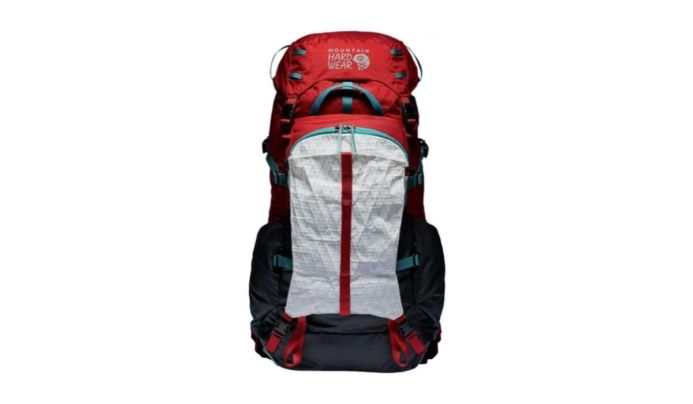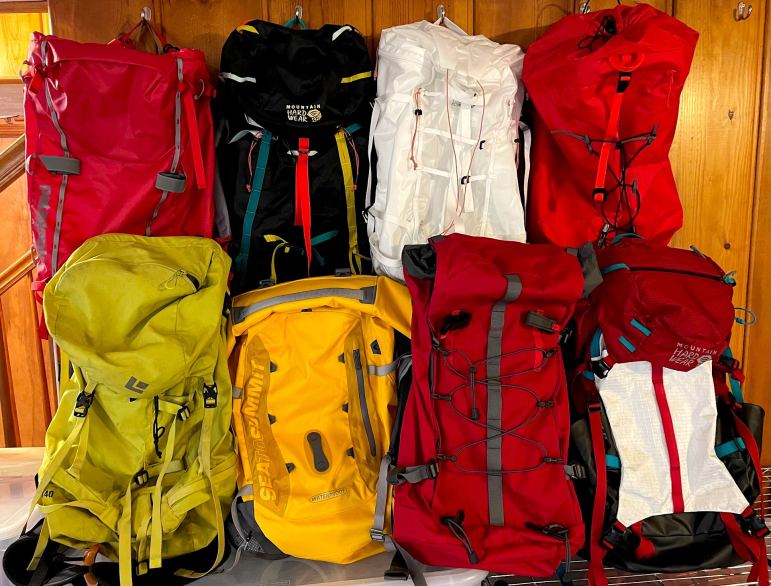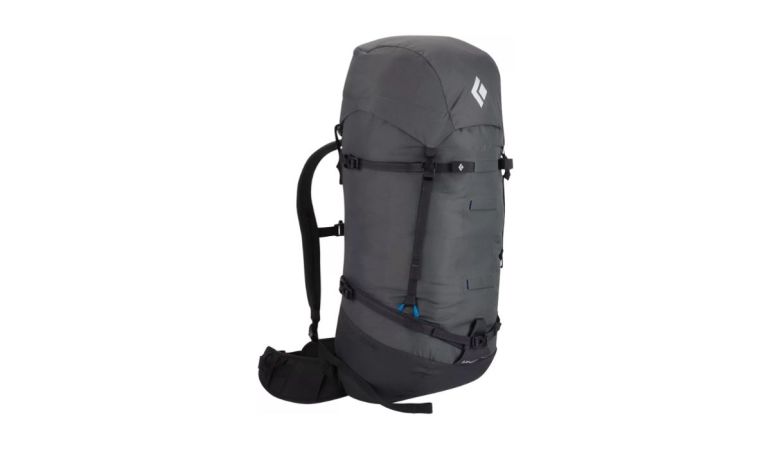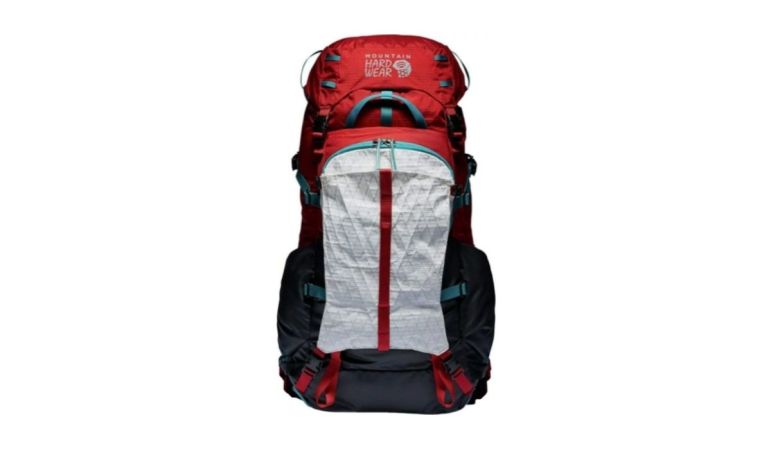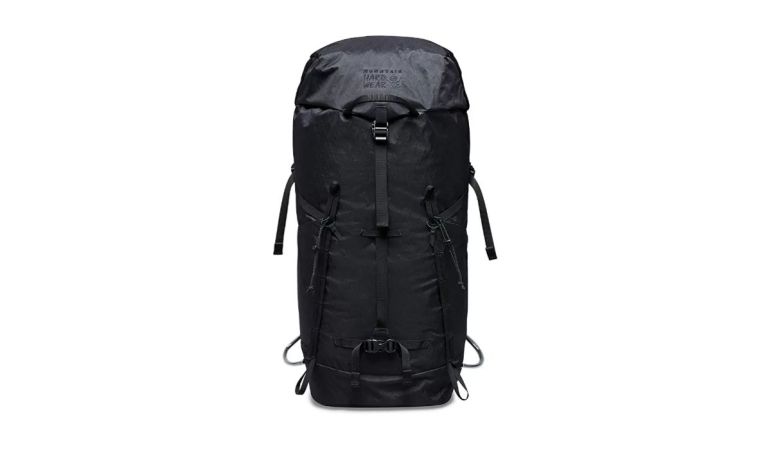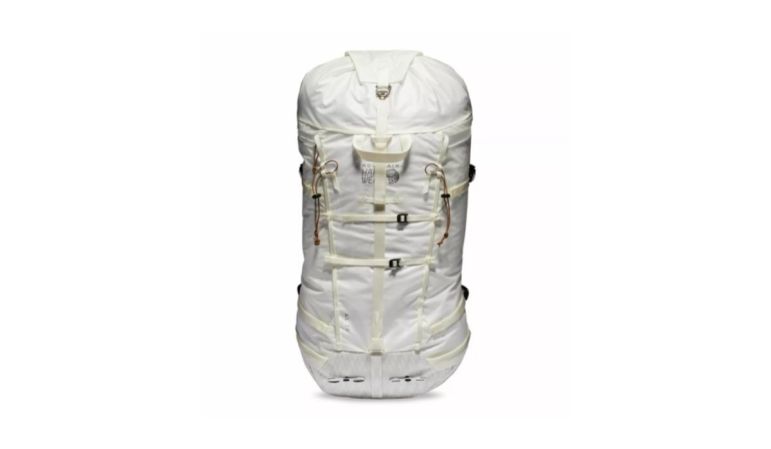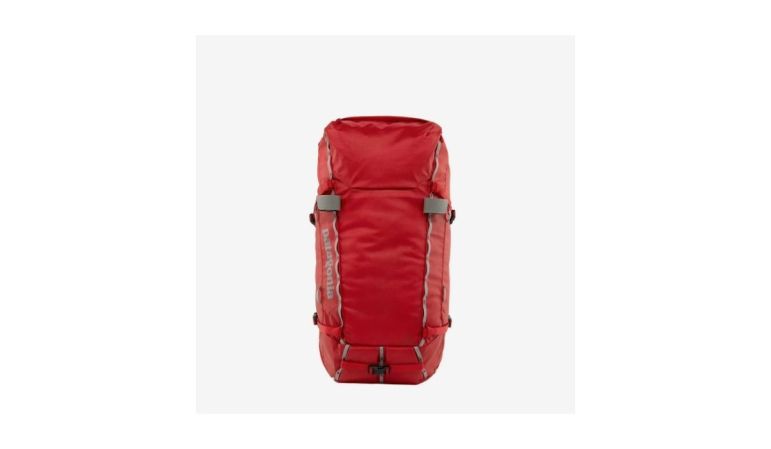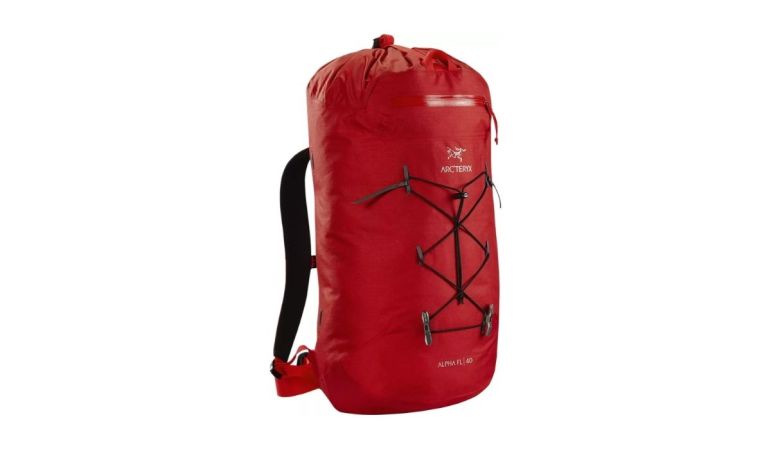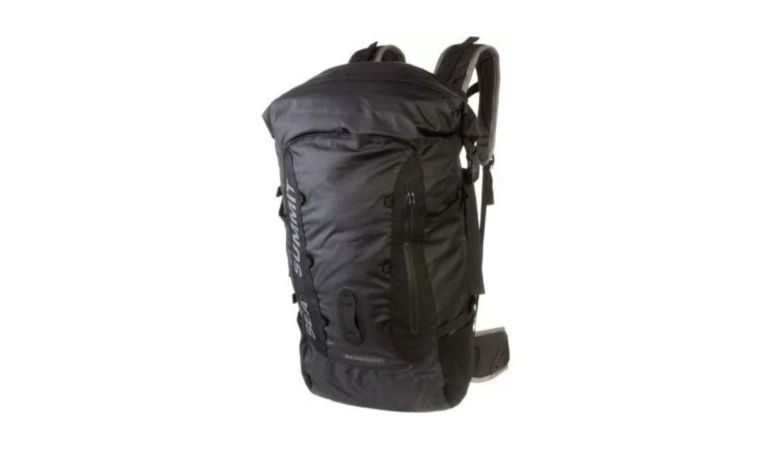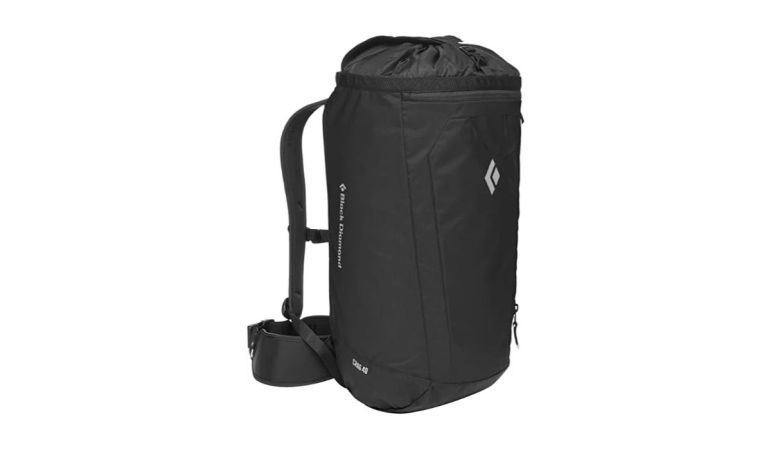We may earn revenue from the products available on this page and participate in affiliate programs.
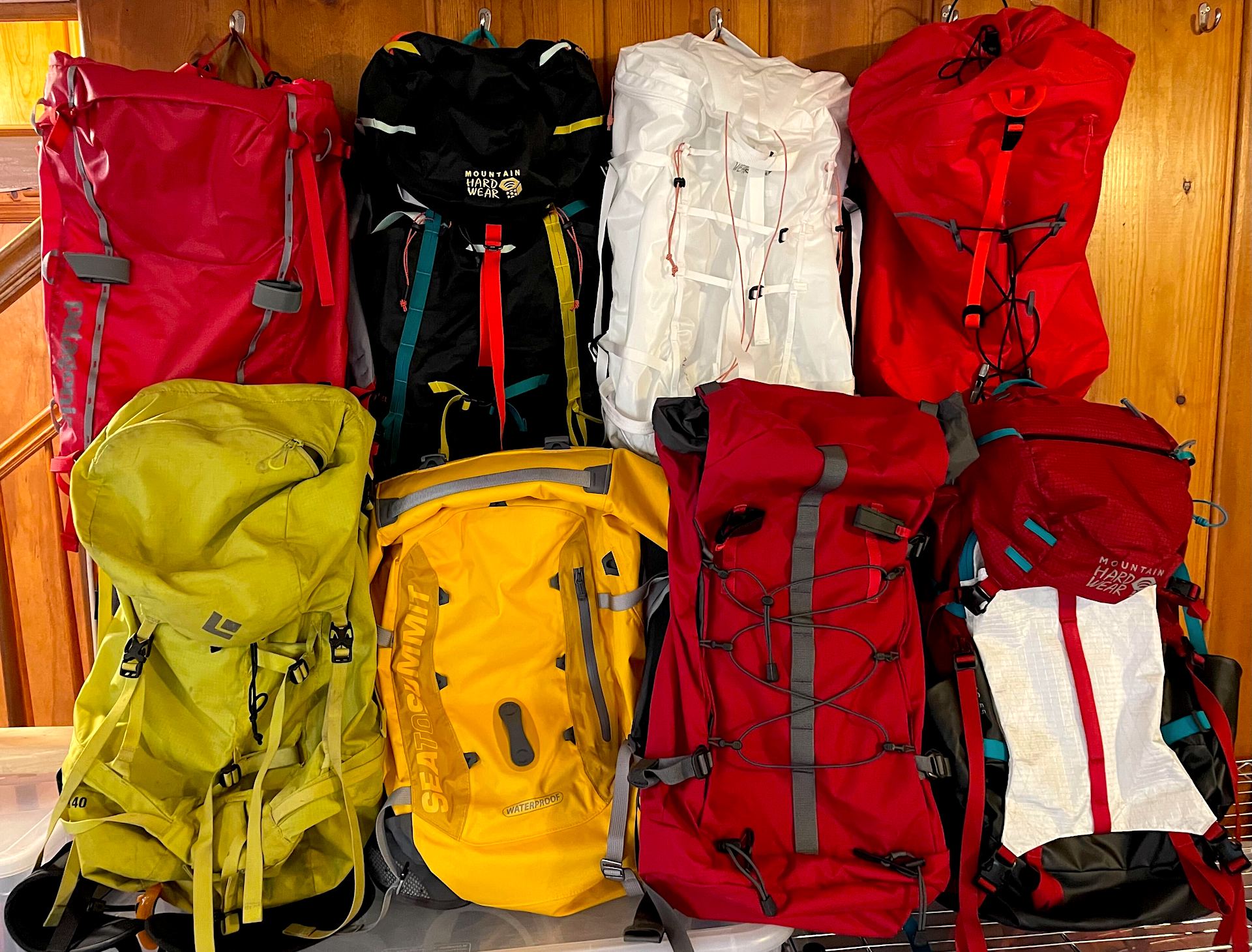
If hiking backpacks — designed to slog heavy loads over long distances — are the generalist of the backcountry world, then climbing packs are the specialists. Climbing packs are designed with a narrow and tapered profile, use durable and abrasion-resistant material like Dyneema or Spectra reinforced ripstop nylon, and exclude comfort features like foam padding on hip belts, back panels, and shoulder straps to save weight. Climbing packs are built that way becuase mountaineering requires technical gear such as ropes, slings, carabiners, harnesses, belay devices, helmets, cams, nuts, ice axes, avalanche shovels, avalanche probes, snow pickets, and crampons, so they need specific places and attachment points to stow them all.
To that end, best climbing packs will haul all your gear from the trailhead to the base of the climb but won’t impede your ability to climb. Gear makers accomplish this by finding the right balance of storage space, durability, and wearability. Here’s how the climbing packs on our list shook out after rigorous testing — and why one of them might just be your new best friend for your next big climb.
- Best Overall: Mystery Ranch Scepter 35
- Best Value: Black Diamond Speed 40
- Editor’s Choice: Mountain Hardwear AMG 55
- Best for Rock Climbing: Mountain Hardwear Scrambler 35
- Best Alpine: Mountain Hardwear Alpine Light 35
- Honorable Mention Value: Patagonia Ascensionist 35
- Best Minimalist: Arcteryx Alpha FL 40
- Best for Caves and Canyons: Sea to Summit FLOW 35L Dry Pack
- Best Crag Bag: Black Diamond Crag 40L
Best Overall
Mystery Ranch Scepter 35
Best Value
Black Diamond Speed 40
Editor’s Choice
Mountain Hardwear AMG 55
Best for Rock Climbing
Mountain Hardwear Scrambler 35
Best Alpine Climbing Pack
Mountain Hardwear Alpine Light 35
Honorable Mention Value Climbing Pack
Patagonia Ascensionist 35
Best Minimalist Alpine Pack
Arcteryx Alpha FL 40
Best for Climbing in Caves and Canyoneering
Sea to Summit FLOW 35L Dry Pack
Best Value Crag Bag
Black Diamond Crag 40L
Why you should trust us
I’ve been an outdoorsman for more than 35 years. I’m an avid long-distance backpacker, rock climber, and mountaineer who understands the value well-designed gear delivers, especially when your life depends on it. I don’t get paid by the manufacturers and have editorial independence. My editor leaves it to me to recommend and prints what I write. All of this enables me to provide you, our valued readers, with our unvarnished, honest opinions on the recommendations we make.
Types of climbing packs
Climbing backpacks are specialized gear designed to haul loads somewhat comfortably over horizontal terrain and be compact and streamlined enough to provide stability and freedom of movement over vertical terrain.
Rock climbing
Most rock climbing backpacks are designed for one-day multi-pitch climbing and have volume capacities ranging from 14 to 20 liters. They are intended to carry essential equipment like an extra rope, rack of climbing protection, harness, approach shoes, a headlamp, water, food, rain and warming layers, and a communication device. Generally, they are carried by the person belaying the leader to allow the leader to focus on leading the pitch.
It’s important to get a rock climbing bag that’s large enough to stow all of your gear inside of it. Crap dangling off the side tends to come unattached and go dangerously hurtling down the rock face. Climbing packs ride higher off the hips to avoid getting in the way of your climbing harness and most have removable hip belts and emergency whistles built into the sternum straps. Look for packs that are made from more durable materials, as they will be frequently abrading against rock and bombroof haul loops. Crag bags and small haul bags also fit into this category.
Alpine mountaineering packs
Alpine packs are designed to support adventures over mixed terrain like rock, ice, and snow. They all sport top-loading designs and lean towards much lighter high-tensile fabrics than rock climbing packs to save on overall weight. Alpine packs are also designed to externally carry ice axes via loop or toggle retention systems, crampons in special external pockets or with straps, and most have the ability to carry skis or snowboards. Most will have design considerations for quick access to avalanche safety kits consisting of a shovel, avalanche probe, and snow saw. They’ll also have design features for externally carrying ice pickets and ropes. For one to three day mountaineering adventures, look for packs in the 35- to 50-liter range.
Mountaineering expedition packs
These packs generally sport all the features of alpine mountaineering packs but have much greater internal capacity (ranging from 55 to 110 liters) to accommodate for additional high altitude and cold-weather equipment. Due to the heavier loads, they are designed with more robust and more comfortable suspension systems designed to transfer the weight of the pack to your hips. The back panels are generally designed to provide more ventilation than alpine packs. They’ll also have more external attachment points, internal access points, and internal organization pockets.
Key features of climbing packs
Climbing packs are specially designed to carry specialized equipment in addition to normal gear, like warming and weather layers of clothing, food, water, and shelter.
Ice axe and crampon attachment points
When the climb requires movement over steep, hardened snow or ice, ice axes and crampons will help keep you stuck to the mountain and prevent you from hurtling to your death. It’s important to have a place to conveniently (externally) and securely stow these items so you don’t have to rummage through your pack and waste time retrieving them. If you are just doing rock climbing, look for a pack without these features as they will just add overall weight and not be used.
Higher riding, more streamlined hip belts
When climbing, you’ll generally be wearing a climbing harness — unless you’re a free soloing freak like Alex Honnold — and you’ll want a pack with a hip belt that doesn’t get in the way of your climbing harness’ gear loops, belay device and loop, and buckle. Most climbing backpacks are designed to ride a bit higher on the hips for this reason. As such, they transfer more of the load to your shoulders than backpacking packs, which are designed to transfer the load to the hips. Many larger capacity climbing packs feature removable padded hip belts to provide additional comfort and load transference on long approaches and later be removed to save weight on ascents.
Rope attachment points
Ropes coils are bulky and heavy, and you’ll want a pack that can efficiently and securely stow them. Look for climbing packs with top rope cinch loops and also side compression straps to secure ropes to the pack.
Benefits of climbing packs
Performance and mobility
When climbing, it truly helps to have a pack designed for vertical terrain. On my first foray into the big hills in the winter, I took a Gregory backpacking pack, which was great on the approach, but when we got on the wall, I realized the pack stays and the top pocket kept me from looking up while wearing my helmet, which sucked. Transitioning to a climbing pack was transformative and I quickly appreciated how the streamlined, flat back paneled pack helped keep the load lower and closer to my center of gravity, which helped me balance more carefully on small footholds on steep pitches. It also interfered much less with my arm and leg range of motion.
Versatility and adaptability
When working high up at altitude, shaving every ounce matters. Most well-designed climbing packs will enable you to strip off components like padded hip belts, internal frame sheets, and top pockets to be left at camp during summit bids. They are designed with extended snow skirts to allow for overstuffing the bag and increasing the carrying capacity considerably. Climbing packs also generally feature multiple external attachment points for carrying additional gear.
Ruggedness and durability
Rock walls can abraid pack material quite quickly, and most climbing packs are designed to be abrasion-resistant. They’re also designed to keep sharp metal pokey things like ice axes and crampon points from puncturing the pack fabric and damaging gear stowed within. Generally, the more abrasion-resistant the pack is, the heavier it is, so go with the lightest material that will adequately do the job over time.
Climbing backpack pricing considerations
Budget
It’s hard to find climbing packs in a budget range because most are made with more design features, are more rugged, and are made with more advanced materials than daypacks for backpacking packs. You also have a lot more riding on the performance of a climbing pack — like your life — so it’s best not to skimp or cut corners. It’s best to wait for a quality pack to go on sale. If you can find a quality climbing pack for less than $130, it’s a steal.
Mid-range
Most quality climbing packs start around $150 full price. The least expensive one I reviewed was the Black Diamond Speed 40 which retails at $189 but can be found on Amazon for $140. I consider $150 to $250 mid-range for climbing packs.
Premium
Premium packs generally cost more due to the use of advanced lightweight materials and increased workmanship around specialized design features. Consider anything more than $250 a premium pack. If you have Benjamins to burn, check out the Hyperlite Prism from Mountain Gear, the Arc’Teryx Alpha FL 40, or the Mountain Hardwear AMG 55.
How we chose our top picks
All the climbing packs in this review were selected based on performance reputation, hands-on inspection, interviewing other experts, and thoroughly reviewing manufacturers’ specifications. We take our time to get to know the strengths and weaknesses of each item, and also check out the reviews of other experts just to make sure we’re not missing anything.
FAQs on climbing backpacks
You’ve got questions, Task & Purpose has answers.
Q: How do I know what size pack to get?
A: There are two essential considerations on pack sizes. First, get a pack that fits your body (torso and waist measurements), and second, get a pack that’s big enough to support the climbing you are going to do. It’s useful to think of this in terms of days.
- Up to a half day: < 20L
- One day/all day: 20 – 39 L
- One to three days: 40 – 56 L
- Three to five days: 60 – 80L
- Five or more days: > 80L
Q: Do I need ice axe and crampon retention systems?
A: Yes, if you care about living and are going to move over snow and ice. If you’re not moving over snow and ice (check the weather forecast), then you might consider a pack without them to save weight.
Q: Can I get away with just one pack?
A: It depends. There’s a lot of versatility in the 35- to 50-liter range of packs. If in doubt, go with the larger pack that has compression straps and a longer snow skirt that enables overstuffing. I’ve used one trusty 40-liter pack for years and it met most of my needs reliably.
Q: What’s the best way to determine what size I need to fit my body?
A: Check each manufacturer’s specs for the torso length and hip belt dimensions. Most manufacturers make climbing packs in small/medium and medium/large sizes. The best thing is to try them on in the store with a load in the main storage chamber. Even better is to buy them online from a reputable retailer with a solid return policy, take them to a climbing gym, treat them carefully, and see how they perform on a wall.
